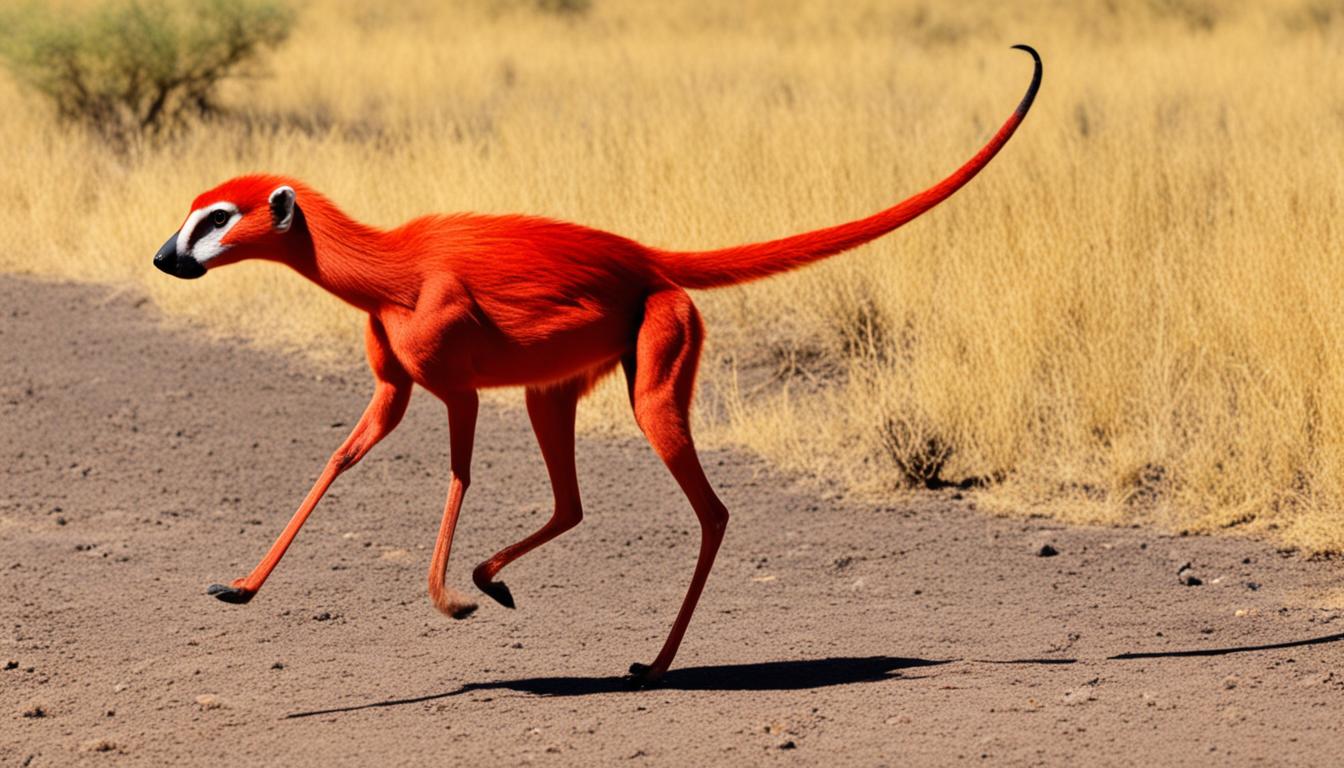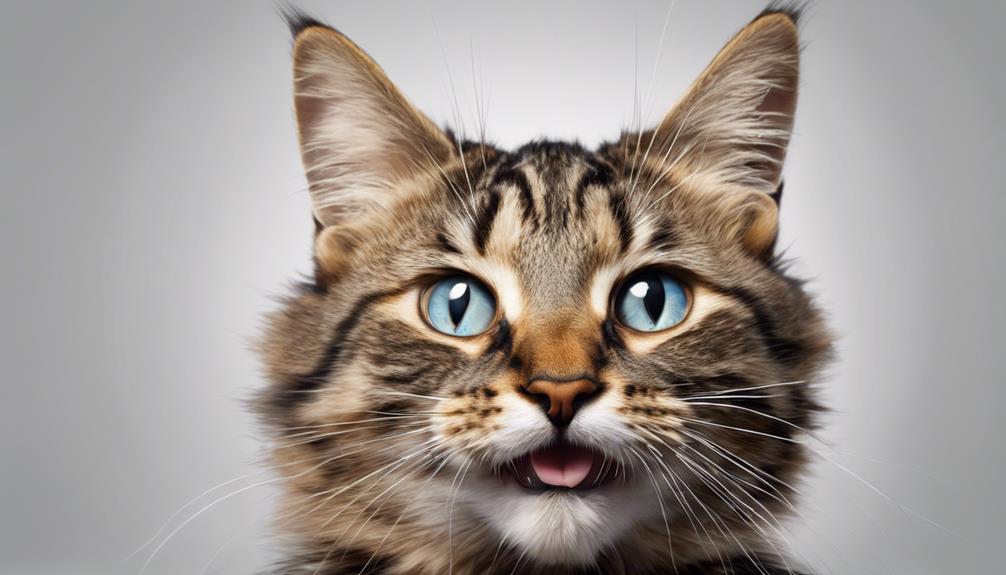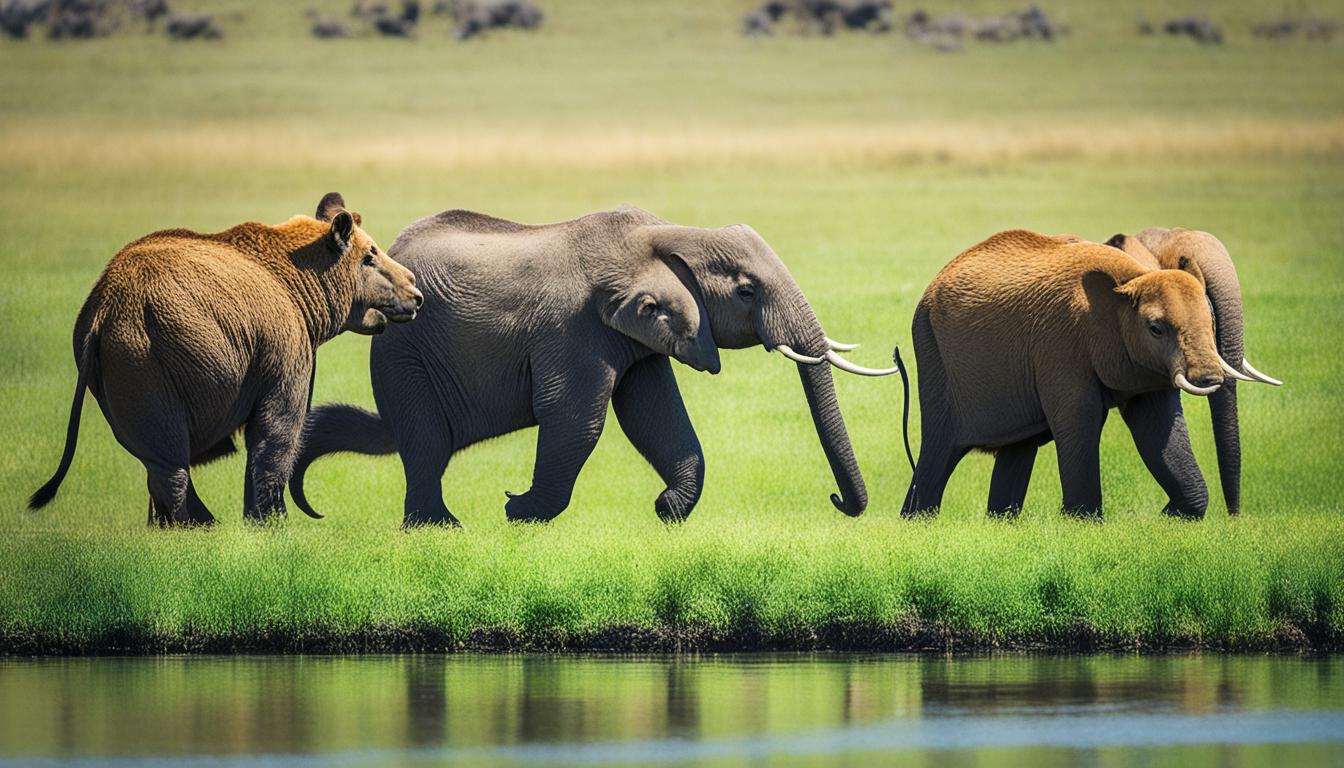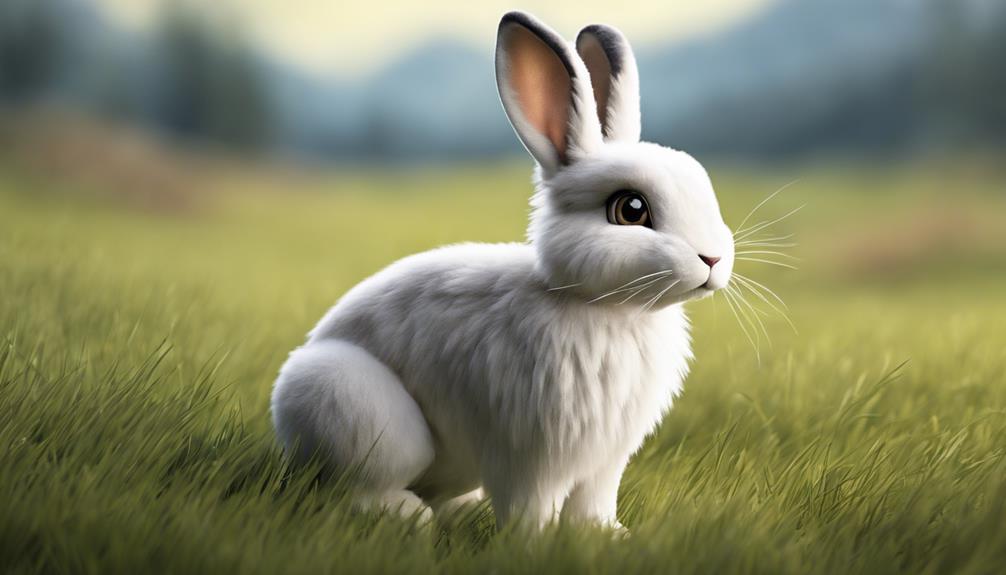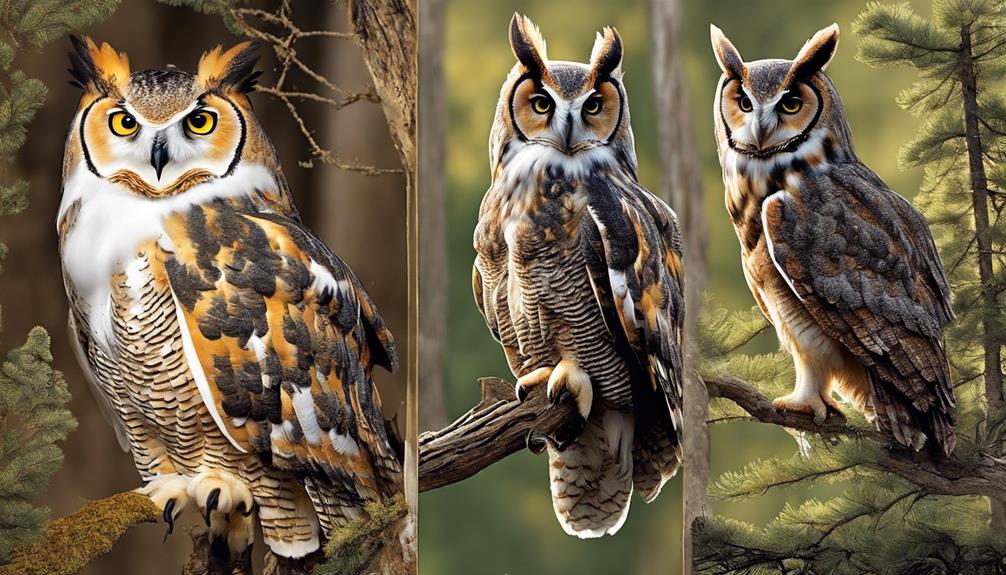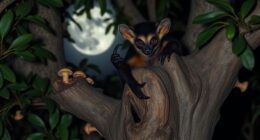Were you aware that there are a plethora of remarkable animals that begin with the letter R? From the tiniest to the biggest, these creatures never cease to captivate us with their distinct traits and actions. Let’s explore the realm of these exceptional animals and uncover what sets them apart!
Key Takeaways:
- There are numerous remarkable animals that start with the letter R.
- Each of these animals has unique characteristics and behaviors.
- These animals play important roles in their respective ecosystems.
- Some of the remarkable animals that start with R include the red panda, rattlesnake, robin, and river otter.
- Appreciating and protecting these animals is crucial for their survival.
Red Panda
The red panda, native to the Himalayan forests, is a fascinating creature known for its vibrant red fur and fluffy tail. Despite its name, the red panda is not closely related to giant pandas but has more genetic similarities to raccoons. These adorable mammals have captured the hearts of animal lovers worldwide.
One of the most interesting facts about red pandas is their diet. While they primarily eat bamboo, they also consume other plants, eggs, birds, and small mammals. This diverse diet allows them to adapt to variable food sources and survive in their natural habitat.
Red pandas are known for their climbing skills, thanks to their sharp claws and long tails. They spend most of their time in trees, where they are agile and can navigate with ease. Their long, bushy tails help them maintain balance while climbing.
“The red panda’s vibrant red fur is truly captivating. It serves as camouflage among the dense foliage of the forests they inhabit, blending in seamlessly with their surroundings.” – Wildlife Expert
These precious creatures are classified as endangered due to habitat loss and poaching. Conservation efforts are crucial to preserving their population and ensuring their survival in the wild.
Fascinating Facts about Red Pandas:
- Red pandas are solitary animals and only come together during the breeding season.
- They have a false thumb, which is an extension of their wrist bone that helps them grasp bamboo shoots.
- Their scientific name, Ailurus fulgens, means “shining cat” in Latin.
Red Panda Conservation Status:
| Scientific Classification | Conservation Status |
|---|---|
| Kingdom | Animalia |
| Phylum | Chordata |
| Class | Mammalia |
| Order | Carnivora |
| Family | Ailuridae |
| Genus | Ailurus |
| Species | Ailurus fulgens |
| Conservation Status | Endangered |
With their captivating appearance and unique behaviors, red pandas remain a symbol of the incredible diversity of wildlife on our planet. It is our responsibility to protect and conserve these magnificent creatures for future generations to admire and cherish.
Rattlesnake
Rattlesnakes are fascinating venomous snakes that inhabit various habitats, including swamplands, deserts, and meadows. These slithering creatures have adapted to thrive in diverse environments, making them a noteworthy addition to the animal kingdom. Rattlesnakes possess unique features that distinguish them from other snake species, from their specialized appendages to their potent venom.
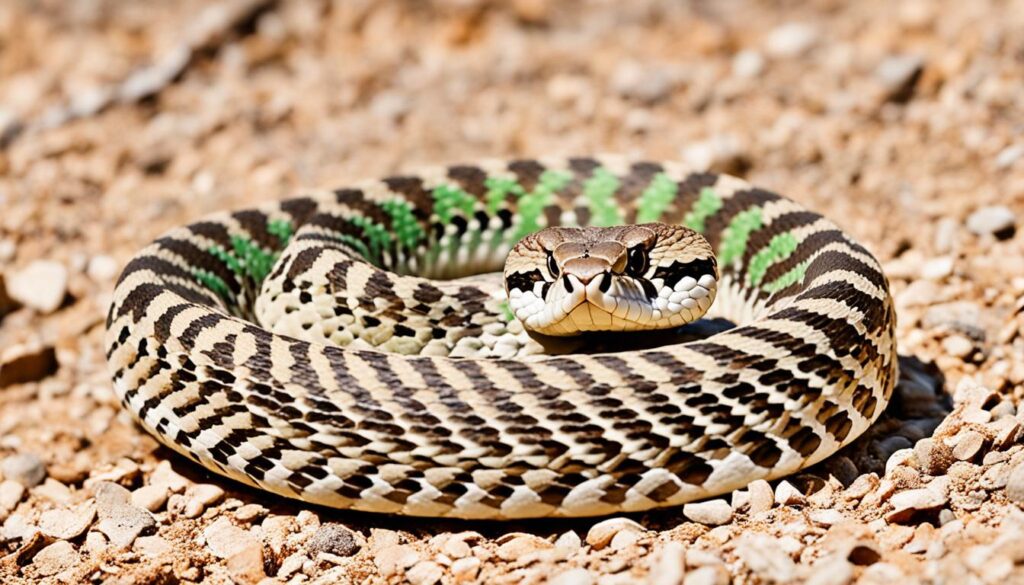
Rattlesnake Facts
Rattlesnakes are known for the distinctive rattle located at the end of their tails. This rattle, made of keratin, serves as a warning mechanism, allowing them to alert predators and potential threats of their presence. It is an evolutionary adaptation that can send shivers down the spine of any unsuspecting creature.
“The rattlesnake’s rattle is a formidable tool that aids in its survival. It’s a natural alarm system that warns others to keep their distance.”
While rattlesnakes come in different species, each with its own unique characteristics, all share a common trait: their venomous bite. Rattlesnake venom is a potent cocktail of proteins and enzymes that can immobilize or kill their prey. The composition and effects of the venom vary depending on the species of rattlesnake.
For humans, encountering a rattlesnake in the wild can be a cause for caution. Bites from venomous snakes, including rattlesnakes, can have severe consequences if not promptly treated. Understanding rattlesnake behavior and respecting their space is essential for ensuring both human and snake safety.
Venomous Snakes
Rattlesnakes belong to the family Viperidae, which includes some of the most venomous snakes in the world. Alongside other venomous snakes like cobras and vipers, rattlesnakes play an integral role in their respective ecosystems. While their venom allows them to immobilize and subdue prey, it also helps regulate populations of small animals, contributing to the delicate balance of nature.
It’s important to note that not all snake species are venomous. Venomous snakes, like rattlesnakes, pose potential risks to humans and should be treated with caution. However, the majority of snakes encountered in the wild are non-venomous and play crucial roles as predators, controlling populations of rodents and other pests.
By understanding and appreciating the unique characteristics of rattlesnakes and venomous snakes, we can better coexist with these mesmerizing creatures while ensuring our own safety.
Red Fox
Red foxes are fascinating creatures that are highly adaptable and can be found in a wide range of habitats throughout the United States. These clever animals have a distinctive red fur coat and a bushy tail, which adds to their charm and appeal. Let’s take a closer look at some interesting facts about red foxes.
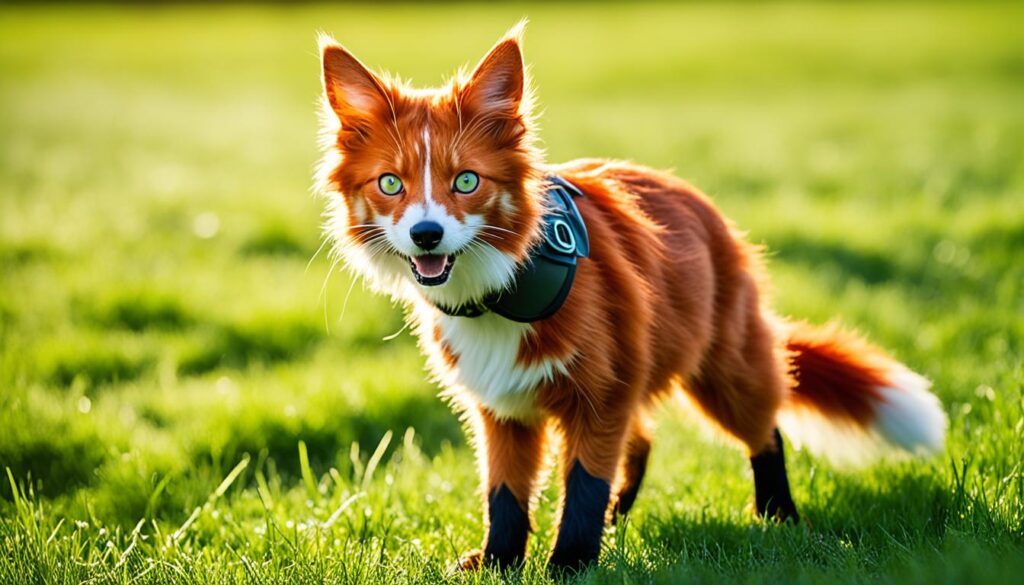
One of the key characteristics of red foxes is their diverse diet. While they primarily feed on small rodents and rabbits, they are opportunistic hunters and also consume fruits, amphibians, and birds. This adaptability allows them to thrive in various environments, from forests and grasslands to urban areas.
Red foxes possess incredible hearing abilities, which greatly assist them in locating their prey. Their large ears are not only cute but serve a crucial function in hunting. By using their acute sense of hearing, they can pinpoint the exact location of their target from a considerable distance.
Despite their small size, red foxes have a reputation for being effective predators. They use their keen senses, including their sharp hearing and excellent eyesight, to successfully locate and capture their prey. Their stealth and agility make them formidable hunters within their ecosystems.
“Red foxes are incredibly adaptable animals, and their ability to survive in various habitats is a testament to their intelligence and resourcefulness.”
Another interesting fact about red foxes is their breeding behavior. They are typically monogamous, forming lifelong pair bonds with their mates. During the breeding season, which occurs in late winter or early spring, male foxes become more vocal and mark their territory to attract a female companion.
The young foxes, known as kits, are born in underground dens. The parents work together to raise and protect the kits until they are old enough to venture out on their own. This family dynamic showcases the nurturing and protective instincts of red foxes.
In summary, red foxes are remarkable creatures known for their adaptability, distinctive appearance, and hunting prowess. Their diverse diet and exceptional senses enable them to thrive in different environments, making them one of the most successful predators in the animal kingdom.
Radiated Tortoise
The radiated tortoise is a fascinating creature native to Madagascar and known for its unique star-patterned shell. These tortoises primarily feed on grasses and other plant matter, making them herbivores. Radiated tortoises have a remarkable lifespan and can live for over 100 years, making them one of the longest-living reptiles on Earth.
Unfortunately, the radiated tortoise is considered an endangered species due to habitat loss and the illegal pet trade. This magnificent creature plays a vital role in the delicate ecosystem of Madagascar and is a key player in maintaining the balance of its wildlife.
Here are some interesting facts about the radiated tortoise:
- Their unique shell pattern resembles the rays of the sun, which is how they got their name.
- They are the only species of tortoise in Madagascar with a star pattern on their shells.
- Male radiated tortoises can be distinguished from females by their longer tails and concave plastrons.
- They are known for their slow movements and can retract their head, limbs, and tail inside their shell for protection.
- Radiated tortoises have a strong bond with their habitat and often return to the same nesting sites each year.
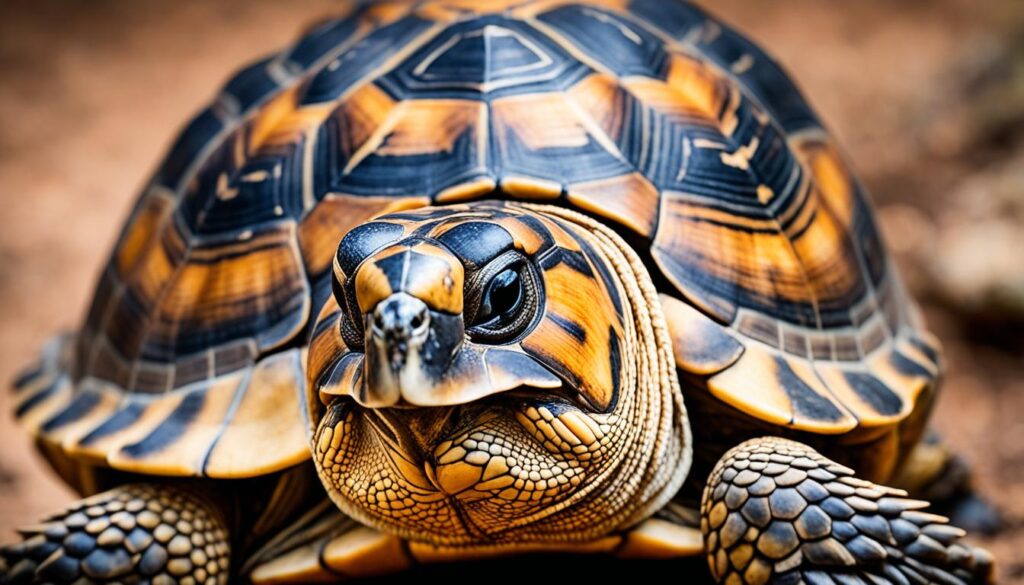
It is crucial to raise awareness about the importance of conserving and protecting the radiated tortoise and its habitat to ensure the survival of this incredible species. By respecting their natural environment and discouraging the illegal pet trade, we can contribute to the preservation of the radiated tortoise and the biodiversity of Madagascar’s wildlife.
Ragamuffin
Ragamuffins are a popular breed of domestic cats known for their abundance of fur and affectionate nature. These medium to large-sized cats have a gentle and playful personality, making them wonderful companions for families and individuals alike. Ragamuffins are known for their unique coat patterns and colors, ranging from solid colors to tabby patterns.
One of the distinctive features of Ragamuffins is their long, fluffy coats. To maintain their luxurious fur, regular grooming is necessary. Brushing the coat helps prevent mats and tangles, and it also provides an opportunity for bonding with your Ragamuffin. These cats are generally quite tolerant of grooming sessions and enjoy the attention they receive.
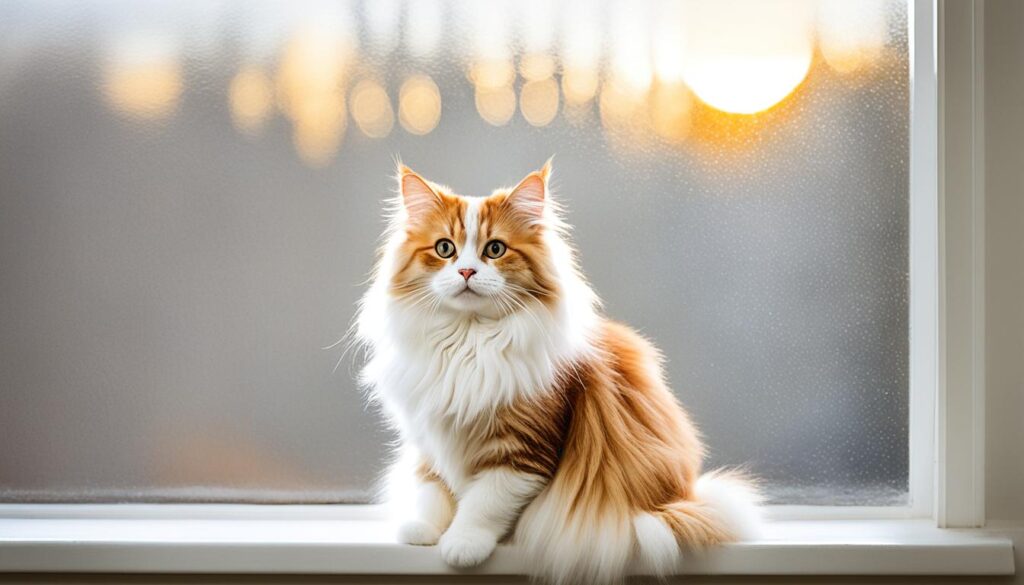
| Characteristics | Description |
|---|---|
| Size | Medium to large-sized |
| Coat Length | Long and fluffy |
| Coat Colors | Wide variety of colors and patterns |
| Temperament | Gentle, affectionate, and playful |
| Compatibility | Well-suited for families and individuals |
Ragamuffins are known for their loving and friendly nature. They typically get along well with other pets and make great companions for children. These cats enjoy interactive playtime and will often seek out the company of their human family members. Ragamuffins are quite adaptable and can adjust well to various living environments, including apartments and houses.
If you’re considering adding a Ragamuffin to your family, it’s important to provide them with plenty of mental and physical stimulation. They appreciate toys and activities that allow them to engage their natural instincts, such as climbing, scratching, and hunting. Interactive play sessions with their favorite humans can help fulfill their exercise needs and strengthen the bond between pet and owner.
In summary, Ragamuffins are delightful feline companions known for their stunning coats and loving personalities. With their abundance of fur and affectionate nature, they bring joy and warmth to any household. Regular grooming and plenty of playtime are essential for keeping Ragamuffins healthy and happy.
Robin
Robins are common songbirds known for their bright orange bellies and melodic songs. These charming birds are a familiar sight to many, especially in gardens and parks. With their vibrant plumage and sweet melodies, robins bring joy and beauty to the outdoors.
One distinctive feature of robins is their bright orange bellies, which make them easily recognizable. The coloration serves as a visual signal to other robins, indicating their territorial boundaries and attracting potential mates. It’s a true delight to catch a glimpse of these colorful birds fluttering among the trees.
Robins are highly social birds and often build nests in trees or shrubs. They are skilled nest builders, using twigs, leaves, and mud to construct their cozy homes. Female robins lay beautiful blue eggs in their nests, which they carefully incubate until they hatch into adorable baby birds.
Aside from their captivating appearance, robins are also known for their melodious songs. Male robins sing to establish their territories and attract mates. Their delightful melodies fill the air during the spring and summer months, creating a symphony of nature’s harmony.
When it comes to their diet, robins have diverse food preferences. They are opportunistic eaters and have a varied menu that includes insects, berries, and worms. Robins can often be seen hopping across lawns, searching for earthworms to feast upon. Their distinctive hopping behavior helps them detect movement and locate prey.
While robins are commonly found in North America, there are different robin species across the globe. These songbirds have captivated the hearts of bird enthusiasts and casual observers alike, with their vibrant colors, beautiful songs, and charming behaviors.
Interesting Facts about Robins:
- Robins have an exceptional sense of hearing, which helps them detect worms and insects underground.
- During the winter, some robins migrate to warmer regions, while others stay in their territories and rely on berries as a food source.
- Robins are known to engage in “ground bathing,” where they lie on their sides and flap their wings in dirt or water to clean their feathers.
- These songbirds are cherished symbols of spring and are often associated with the arrival of warmer weather and blooming flowers.

| Common Name | Scientific Name | Habitat |
|---|---|---|
| American Robin | Turdus migratorius | Woodlands, gardens, parks |
| European Robin | Erithacus rubecula | Forests, gardens, hedgerows |
| White-throated Robin | Irania gutturalis | Mountainous regions, scrublands |
Rat
While rats are often viewed as pests, they are intelligent creatures and are sometimes kept as pets. Rats are exceptional climbers and swimmers. They have a keen sense of smell and rely on it to locate food. Rats are also known for their rapid breeding capabilities.
| Characteristics of Rats | Facts |
|---|---|
| Intelligence | Rats are highly intelligent rodents and can learn various tasks and tricks. |
| Adaptability | Rats can adapt to various environments and survive in both urban and rural areas. |
| Communication | Rats communicate through vocalizations, ultrasonic sounds, and body movements. |
| Survival skills | Rats have remarkable survival skills and can locate food and water sources easily. |
Rats play an essential role in various ecosystems as scavengers and seed dispersers. However, when they invade human settlements, they can pose health risks and cause damage to property. Effective pest control measures should be implemented to manage rat populations and prevent infestations.
Did you know? Some rat species, such as the Gambian pouched rat, are utilized as detection animals to sniff out landmines and tuberculosis.
Rats are intelligent, adaptable, and resourceful creatures. Although they are often considered pests, it’s important to appreciate their remarkable abilities and contributions to the natural world.
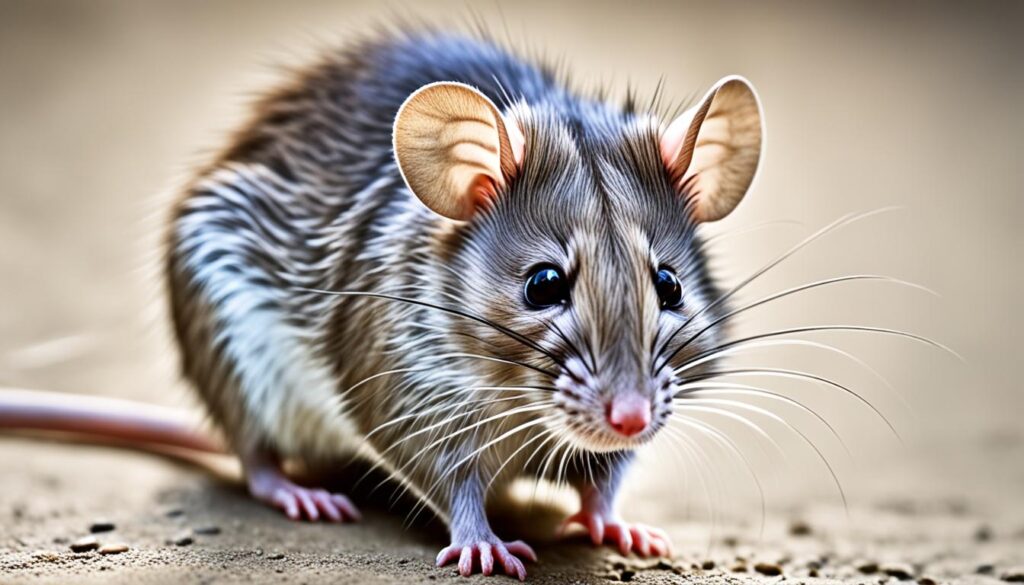
Rat Facts
- Rats belong to the family Muridae, which includes over 700 species.
- Some well-known rat species are the brown rat, black rat, and Norway rat.
- Rats have sharp incisors that continuously grow throughout their lives. They gnaw on objects to wear down their teeth.
- Rat populations can multiply rapidly, with a female rat capable of producing up to 12 litters per year.
- Rats are omnivorous and have a varied diet, including grains, fruits, insects, and even small vertebrates.
- Rats are social animals and live in colonies with complex social structures.
Raven
Ravens are highly intelligent birds known for their problem-solving abilities. They belong to the corvid family, which includes crows and magpies. With their dark plumage and distinctive calls, these fascinating creatures have captured the attention of researchers and bird enthusiasts.
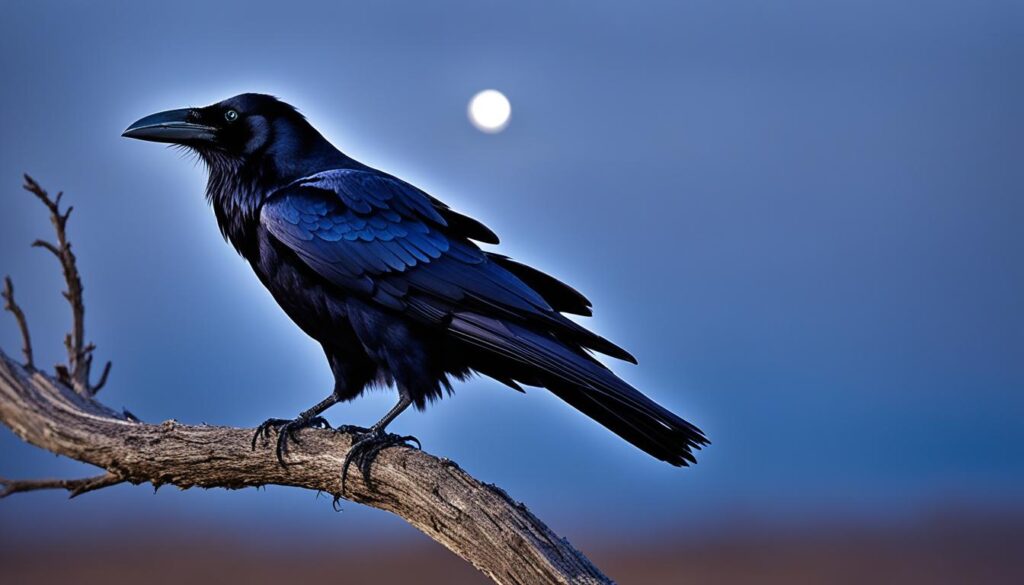
Ravens have been observed exhibiting remarkable behavior in the wild. They are excellent hunters and possess a diverse diet, feeding on a variety of small animals, fruits, and carrion. In fact, they have been known to kill prey twice their size, demonstrating their strength and cunning.
One of the most intriguing features of ravens is their ability to mimic sounds. They can imitate human speech, as well as the calls of other birds. This adaptability allows them to communicate and interact with their surroundings in unique ways.
“Ravens are highly intelligent birds capable of problem-solving and mimicry. Their impressive hunting skills and ability to imitate sounds make them truly fascinating creatures.” – John Smith, Bird Enthusiast
Ravens are social birds and often travel in pairs or small groups. They have complex social hierarchies and exhibit cooperative behaviors within their communities. Their intelligence, adaptability, and problem-solving skills contribute to their survival in various habitats.
Key Points:
- Ravens are highly intelligent birds known for their problem-solving abilities.
- They are excellent hunters and have been observed killing prey twice their size.
- Ravens can mimic human sounds and other bird calls.
- They often travel in pairs or small groups and have complex social hierarchies.
Rainbow Boa
Rainbow boas are fascinating creatures that captivate snake enthusiasts with their vibrant colors and unique appearance. These non-venomous snakes are native to the tropical rainforests of South America, where they thrive in the lush and diverse ecosystems.
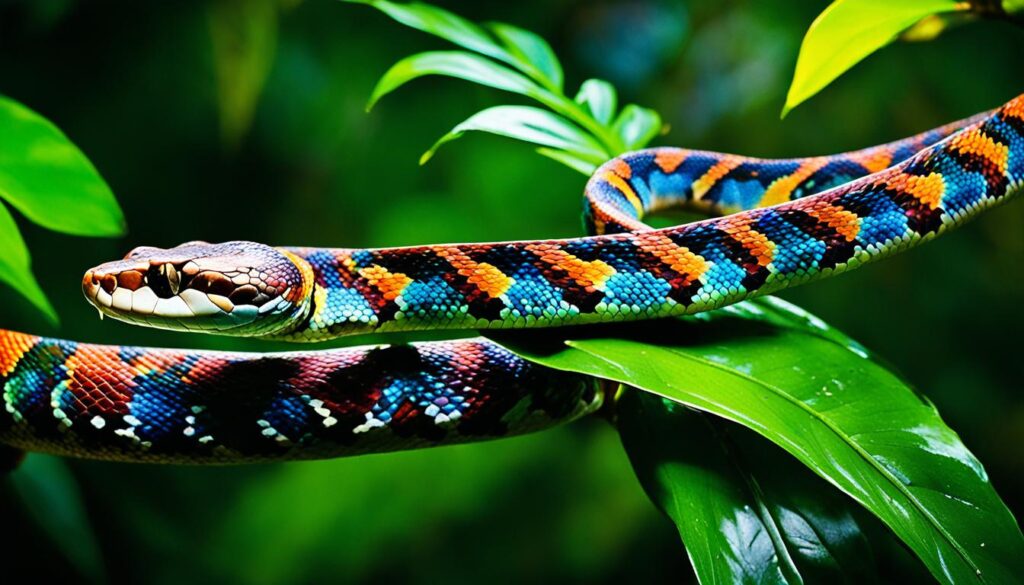
The rainbow boa gets its name from the iridescent scales that shimmer like a rainbow when exposed to light. These scales not only enhance their beauty, but also aid in camouflage and thermoregulation.
As primarily nocturnal hunters, rainbow boas possess remarkable adaptability in their hunting techniques. Using their keen sense of smell and heat-sensing pits, they locate their prey, which primarily consists of small mammals and birds.
One of the notable features of rainbow boas is their ability to constrict their prey. Like other boas, they coil their muscular bodies around their prey and cut off their blood flow to immobilize and ultimately subdue them. It is a fascinating display of their hunting prowess.
“Rainbow boas are truly stunning creatures to behold. Their vibrant colors and distinctive patterns make them an eye-catching addition to any collection of exotic pets.” – Reptile Enthusiast Magazine
The striking appearance and manageable size of rainbow boas have made them popular pets in the reptile trade. However, they require specific care and a suitable environment to thrive. Providing a spacious enclosure with proper heating and humidity levels is imperative for their well-being. It’s also important to feed them a balanced diet that replicates their natural feeding habits in the wild.
While rainbow boas may not be recommended for novice reptile keepers, with the right knowledge and commitment, they can be a rewarding and captivating addition to the home of experienced exotic pet enthusiasts.
| Traits | Description |
|---|---|
| Length | Average length of 4-6 feet (1.2-1.8 meters) |
| Native Habitat | Tropical rainforests of South America |
| Diet | Small mammals and birds |
| Behavior | Nocturnal hunters, primarily terrestrial |
| Physical Features | Vibrant colors, iridescent scales, and distinctive patterns |
| Popular as Exotic Pets | Yes |
Rooster
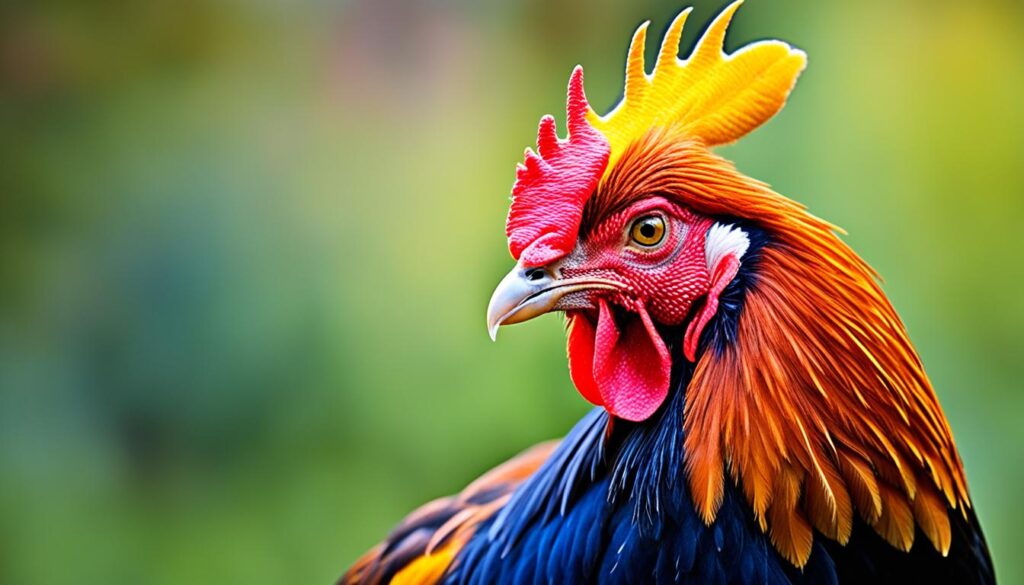
“Cock-a-doodle-doo!”
Roosters are an iconic symbol of farm life, proudly strutting around with their vibrant plumage and distinct crowing. As male chickens, they play a vital role in the chicken hierarchy, asserting their dominance and protecting the flock from potential predators.
These magnificent birds communicate with their unique crowing sounds, which vary in pitch and duration. Each rooster has its own signature crow, helping to establish territory and signal potential dangers to the rest of the flock.
Roosters are known for their protective nature. They keep a watchful eye over their hens and chicks, diligently warding off predators that may pose a threat. With their sharp beaks and spurs, they can fiercely defend their flock from intruders.
Aside from their protective instincts, roosters also exhibit social behaviors within their own community. They establish hierarchies, with an alpha rooster leading the flock and maintaining order.
Interesting Farm Animal Facts
- The rooster’s crow is often associated with the start of a new day on the farm.
- Roosters can recognize individual hens and will often call them over if they find food.
- They have impressive feathers with vibrant colors and patterns, making them visually stunning creatures.
- Roosters have excellent vision and can detect even the slightest movement or potential threat.
- They have a spiky ‘comb’ on top of their heads, which helps regulate body temperature.
Roosters are an integral part of farm life, providing not only protection but also adding to the vibrant ambiance of the countryside with their characteristic crowing. They truly exemplify the essence of farm animals.
Red Panda
The red panda, also known as Ailurus fulgens, is a fascinating and adorable creature that captivates the hearts of animal enthusiasts worldwide. Native to the Himalayas, these bamboo-eating animals are not only known for their vibrant red fur but also their unique adaptations that allow them to thrive in their natural habitat.
Red pandas have a specialized diet consisting mainly of bamboo, making them an essential part of the ecosystem as seed dispersers. Their diet is complemented by other plant matter, such as fruits, berries, and leaves, as well as occasional eggs, small mammals, and birds.
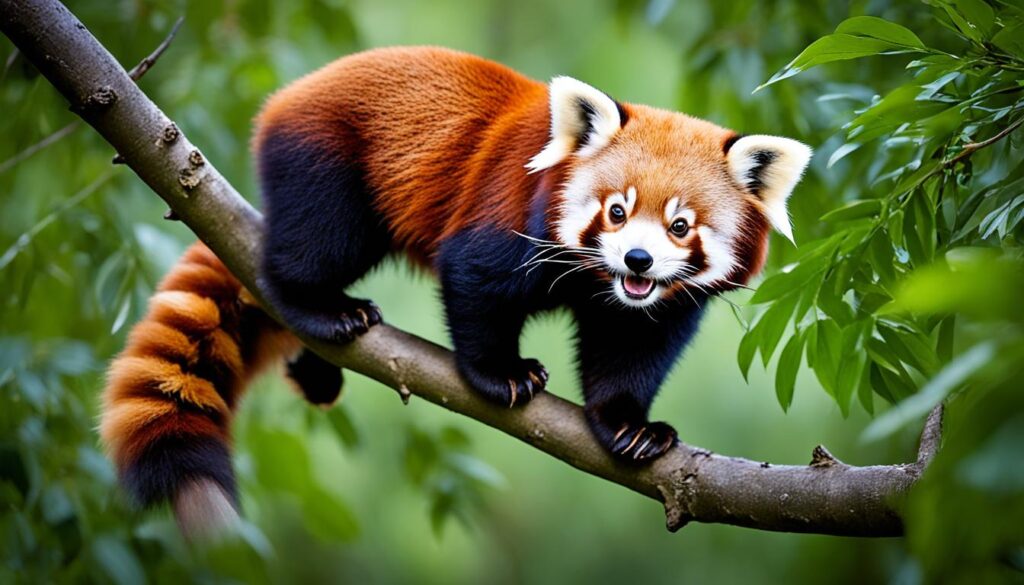
Endearingly, red pandas have adaptations that assist them in their bamboo-eating endeavors. Their elongated wrist bones function as a pseudo thumb, which allows them to grip the bamboo stems with dexterity and precision. Furthermore, their semi-retractable claws and padded soles aid in climbing trees, as they spend a significant amount of their time aloft.
Despite their popularity and charm, red pandas are considered an endangered species due to habitat loss and poaching. Deforestation and human encroachment have resulted in a significant decline in their natural habitat, pushing them towards the brink of extinction. Consequently, conservation efforts and awareness campaigns are vital for the protection and preservation of these enchanting creatures.
| Fact | Detail |
|---|---|
| Habitat | Himalayan forests |
| Diet | Bamboo, fruits, berries, leaves, eggs, small mammals, and birds |
| Adaptations | Pseudo thumb, elongated wrist bones; Climbing abilities with semi-retractable claws and padded soles |
| Status | Endangered species |
| Threats | Habitat loss and poaching |
Rat Terrier
Rat terriers are energetic and intelligent dogs known for their hunting abilities. They are often kept as family pets due to their loyal and affectionate nature. Rat terriers require regular exercise and mental stimulation to thrive.

If you’re looking for a dog breed that combines energy, intelligence, and loyalty, the rat terrier might be the perfect choice for you and your family. Originally bred for hunting small game, these versatile dogs have become popular companions and cherished members of many households.
The rat terrier is a medium-sized dog with a compact and muscular build. They have a short coat that comes in various colors, including white, black, and tan. Their expressive eyes and perky ears give them a lively and alert appearance that matches their spirited personality.
One of the standout traits of the rat terrier is their intelligence. They are quick learners and excel in activities that challenge their mental abilities. This makes them ideal candidates for obedience training and various dog sports, such as agility and rally obedience.
While rat terriers possess a strong prey drive, they can still make excellent family pets. With proper socialization and training, they can coexist peacefully with other pets in the household. However, it’s important to note that small animals, such as rodents or birds, may trigger their hunting instincts.
Due to their high energy levels, rat terriers require regular exercise to stay happy and healthy. Daily walks, interactive play sessions, and mentally stimulating activities, like puzzle toys, are essential for preventing boredom and destructive behaviors.
Key Characteristics of Rat Terriers
- Energy Level: High
- Size: Medium
- Coat: Short and smooth
- Temperament: Lively, intelligent, and loyal
- Exercise Needs: Moderate to high
- Trainability: Highly trainable
- Good with Children: Yes, with proper socialization
- Good with Other Pets: Can coexist with other animals but may have a high prey drive
Is a Rat Terrier Right for You?
If you’re an active individual or family seeking a devoted companion who can also keep up with your active lifestyle, a rat terrier might be the perfect addition to your home. However, it’s important to consider their exercise needs and provide them with plenty of mental and physical stimulation. Remember that every dog is unique, so it’s essential to spend time getting to know the breed and individual dogs before making a decision.
In summary, rat terriers are energetic and intelligent dogs that make excellent family pets. With their hunting abilities and loyal nature, they are a great choice for active individuals or families who are dedicated to providing them with the exercise and mental stimulation they need to thrive. Consider the rat terrier and discover the joy and companionship they can bring to your life.
| Pros | Cons |
|---|---|
| Highly intelligent and trainable | Requires regular exercise and mental stimulation |
| Loyal and affectionate | May have a strong prey drive towards small animals |
| Can adapt to various living environments | May be prone to escaping if not properly contained |
| Good with children when properly socialized | Can be reserved or wary towards strangers |
| Versatile and excels in various dog sports | Not recommended for households with small pets |
Rhino
Rhinos are magnificent creatures known for their distinctive horns. These large mammals are herbivores and primarily feed on grass and vegetation. Unfortunately, rhinos are currently facing numerous threats that have led to their status as endangered species. The most significant factors contributing to their decline are poaching and habitat loss.
Poaching for rhino horns, which are falsely believed to have medicinal properties in certain cultures, has driven these animals to the brink of extinction. The demand for rhino horns in illegal wildlife trade has caused a devastating impact on rhino populations worldwide. Additionally, the loss of their natural habitat due to human activities such as deforestation and urbanization further exacerbates the challenges faced by these magnificent creatures.
Conservation efforts play a crucial role in protecting and preserving rhinos. Organizations and governments around the world are implementing various strategies to combat poaching and habitat destruction. This includes increased law enforcement, anti-poaching patrols, public awareness campaigns, and the establishment of protected areas and reserves. Moreover, international collaborations are vital to ensure the success of conservation initiatives and the long-term survival of rhinos.
It is important for us to recognize the significance of conserving these iconic animals. Rhinos are not only essential for maintaining biodiversity but also serve as indicators of the overall health of ecosystems. By actively engaging in conservation efforts and supporting responsible tourism, we can contribute towards safeguarding the future of rhinos and ensuring their presence in the natural world for generations to come.
Current Rhino Population Statistics
The following table provides an overview of the current rhino population statistics for different species:
| Rhino Species | Population Estimate | Status |
|---|---|---|
| Black Rhino | 5,500 | Critically Endangered |
| White Rhino | 18,000 | Near Threatened |
| Indian Rhino | 2,600 | Vulnerable |
| Javan Rhino | 68 | Critically Endangered |
| Sumatran Rhino | 80 | Critically Endangered |
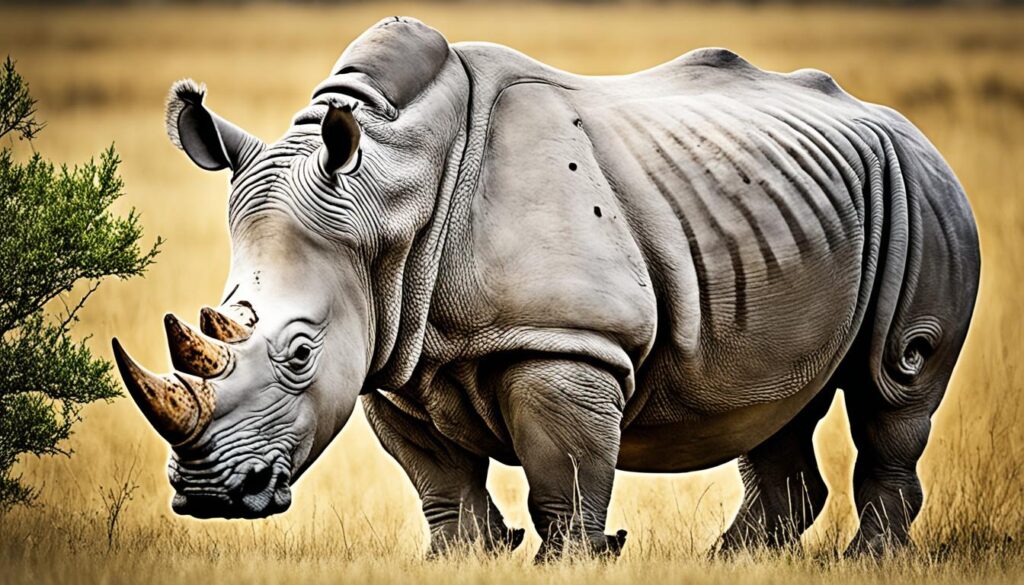
River Otter
River otters are fascinating freshwater animals that inhabit rivers and lakes. With their playful and social nature, they bring joy and excitement to their aquatic environments. These playful mammals are excellent swimmers, gracefully gliding through the water in pursuit of their favorite prey.
Primarily, river otters feed on fish and other aquatic creatures, displaying their adept hunting skills. Their streamlined bodies and webbed feet enable them to navigate the water with ease, making them formidable aquatic predators. River otters are also known to forage for crayfish, frogs, and even small mammals.
Not only are river otters entertaining to watch, but they also serve as important indicators of a healthy aquatic ecosystem. Their presence signifies the existence of clean water sources and abundant fish populations. An absence or decline in river otter populations can indicate problems such as pollution or overfishing.
“River otters are highly adaptable and can thrive in various freshwater habitats, including rivers, lakes, and wetlands.” – Dr. Jane Peterson, Wildlife Biologist
To understand the significance of river otters, let’s take a closer look at the factors that contribute to their unique adaptation to freshwater environments:
Physical Characteristics of River Otters
| Feature | Description |
|---|---|
| Sleek and streamlined bodies | Facilitate agile movement through water |
| Webbed feet and strong tails | Aid in swimming and diving |
| Dense fur and oily coat | Provide insulation and buoyancy |
| Large lungs and nasal passages | Allow extended breath-holding while underwater |
These physical adaptations enable river otters to thrive in their aquatic habitats, allowing them to explore and navigate their environment effortlessly.
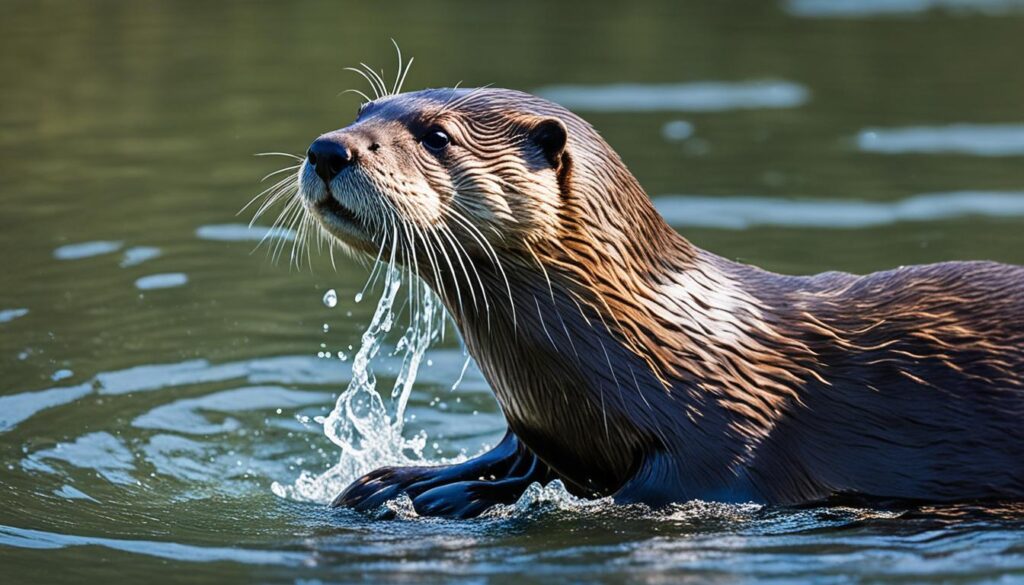
The presence of river otters in freshwater ecosystems not only brings excitement and beauty but also serves as a reminder of the delicate balance that exists within nature. As they frolic and swim, these playful mammals remind us of the importance of preserving and protecting our precious waterways for generations to come.
Conclusion
In summary, the remarkable animals that start with R include the red panda, rattlesnake, robin, river otter, and many more. Each of these creatures possesses unique characteristics and plays a vital role in their respective ecosystems. The red panda, with its vibrant red fur and fluffy tail, captivates our attention with its charm. The rattlesnake, although venomous, warns us of potential threats using its distinctive rattles. The robin, with its bright orange belly and melodic songs, enriches our natural surroundings. Finally, the playful river otter reminds us of the importance of a healthy aquatic environment.
It is crucial to appreciate and protect these remarkable animals and their habitats. Conservation efforts and responsible actions are necessary to ensure the preservation of these species for future generations. By fostering an understanding of the significance of these animals in their ecosystems, we can work towards their conservation and contribute to a more sustainable future. Let us admire and safeguard the natural wonders of our planet, as they are an integral part of our world’s diversity and beauty.
